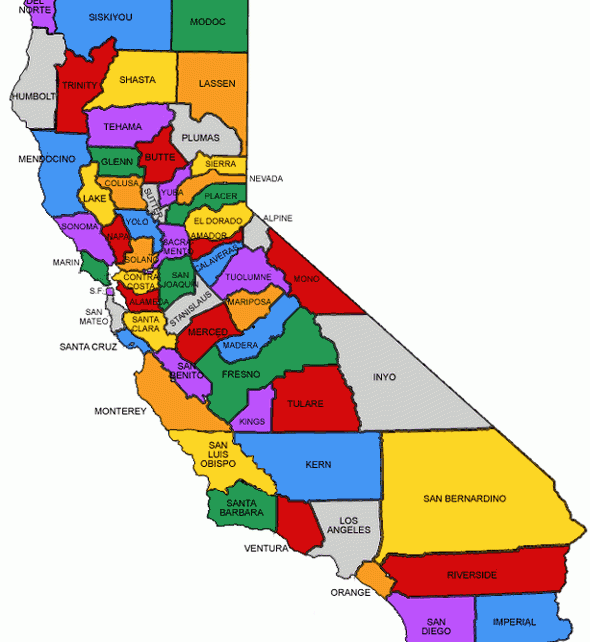How Many CA Counties? Definitive Guide for Visitors and Residents
How Many CA Counties? Definitive Guide for Visitors and Residents
Blog Article

Trying to find out what the exact county count in California is? You’re certainly not the only one. From trivia nights to travel planning, the magic figure 58 always surfaces, and still that single digit barely scratches the surface.
California’s counties forma patchwork of contrasts: fog-kissed seaside towns, snow-capped alpine districts, fertile Central Valley breadbaskets, and global entertainment capitals. Each county carries its own story, shaped byrailroad expansion, cutting-edge innovation, and relentless population booms.
Over the next few pages, we’ll explorehow the state’s county map froze at fifty-eight, the real responsibilities counties shoulder, and the outliers that set fascinating records. By the end, you’ll know the facts—and be ready to ace any quiz with confidence.
Origins of California’s 58 Counties
When California joined the Union in 1850, the map contained barely half the jurisdictions we know now. An unprecedented population boom compelled legislators to carve out new counties. By the end of the 1870s, the count had ballooned to more than fifty counties, and in 1907 the final five were added, setting in stone the canonical figure of fifty-eight.
Assembly journals reveal that fresh jurisdictions sprang out of three major pressures:
- Geographic isolation made court access impossible.
- Revenue battles splitting river towns from hinterlands sparked break-ups.
- Ethnic enclaves wanted self-rule.
By 1920, the political map stabilised. Today, every effort to create county #59 stalls, causing commentators to dub the era of county creation truly closed.
From Kelp Forests to High Deserts: County Geography
Stretch a string from rugged Del Norte on the Oregon line to sun-baked Imperial touching Mexico, and you’ll traverse a climatic kaleidoscope. Ocean-brushed jurisdictions soak up fog-cooled summers, while interior giants like San Bernardino or Kern battle drought cycles.
- Alpine districts such as Mono, Mariposa, and Calaveras store California’s snowpack.
- Delta counties mix levee farms with wetlands.
- Channel-coast administrators like Santa Barbara oversee ferry routes.
That geographic spread underpins the stark fiscal gaps between counties. Climate, after all, shapes crops and careers.
County Government and Core Services
Amid Sacramento’s delegated framework, cities tackle local bylaws, but counties shoulder vital “unseen” duties that hold civilisation together. Cradle-to-grave—vital records, coroner reports, property deeds—all sit at the recorder-assessor’s office.
Sheriff’s departments patrol vast rural stretches, while superior courts hear civil suits. Health departments administer vaccination campaigns. Budget battles occur in monthly Board of Supervisors sessions.
Example: Contra Costa’s Shared Services Model
Los Angeles County alone employs 100 000+ workers, illustrating how flexible county structures can be. One template doesn’t fit all when land areas shift from 47 to 20 000 sq mi.
In the end, county offices bridge Sacramento’s big laws and local reality. Understanding their remit helps residents demand accountability.
Population, Economy, and Record-Holding Counties
Home to over 39 million residents, but the headcount collects in dramatic clumps. LA’s single jurisdiction hosts more than one resident in four. On the flip side, tiny Alpine County rarely tops 1 200 inhabitants.
- Most populous: County of Los Angeles
- Least populous: Alpine
- Biggest footprint: San Bernardino
- Tightest borders: San Francisco
Money, like people, concentrates and evaporates. South Bay enclaves see venture cash flow in at record rates, while cotton-and-almond hubs battle mechanisation and drought cycles. These fiscal contrasts drive school funding debates every decade.
Knowing which county tops which list pays dividends: county metrics shape property taxes and commute times.
Touching All Counties in One Journey
For intrepid travellers, setting foot in each CA county ranks as a top geo-challenge. The classic route sets out in sunny San Diego, heads north along Highway 1, curves inland at Big Sur, then cuts a diagonal across nut groves and tomato fields, before snaking into the granite spine for ghost towns and mining museums.
Breaking the Trip Into Segments
- South-land Loop – Border to wine country; a baker’s dozen of stops in four days.
- Valley Ribbon – Grapes to rice paddies; flat-land express.
- Lava Beds Detour – evergreen corridors; hidden hot springs.
Close the circuit in the desert southeast, after two thousand kilometres of asphalt. After that, you can brag that you’ve lived the answer to the county-count question—having grabbed selfies at every line marker.
Frequently Asked Questions
Below you’ll find concise answers to the most common county-related queries.
How many counties does California have?
California officially recognises 58 counties—a number that hasn’t changed since 1907. Check any authoritative source, and you’ll find the same figure: precisely fifty-eight.
Where do the most Californians live?
The population heavyweight is Los Angeles County, housing roughly one in four Californians. From Hollywood to high tech, a mix of industries continues to fuel steady inflow.
Which CA county has the fewest residents?
Tiny Alpine County sits at the bottom of the population chart, rarely crossing the 1 200-resident mark. High-elevation geography keeps growth modest, preserving a frontier feel.
Which county covers the largest land area in California?
Geographic titan San Bernardino County stretching more than 20 000 square miles. Its sheer scale how.many counties in california means climate zones shift from alpine snow to Mojave heat within county lines.
What historical events fixed the number at 58?
Gold-rush politics, rail expansion, and farmland disputes carved today’s boundaries, with the final adjustments ratified in 1907. While secession talk appears now and then, no plan has passed statewide hurdles.
Could a region break away to become its own county today?
On paper, state statutes permit county formation, yet practical barriers loom large. Financial viability studies plus state-level sign-off deter most would-be county creators. Hence, California has remained at 58 for generations.
Why are counties important to everyday life?
Behind the scenes, counties keep daily life functioning: voter registration, deed recording, health clinics, and sheriff patrols. Their wide remit bridges state mandates with community needs, making the 58 jurisdictions essential to all Californians.
Report this page